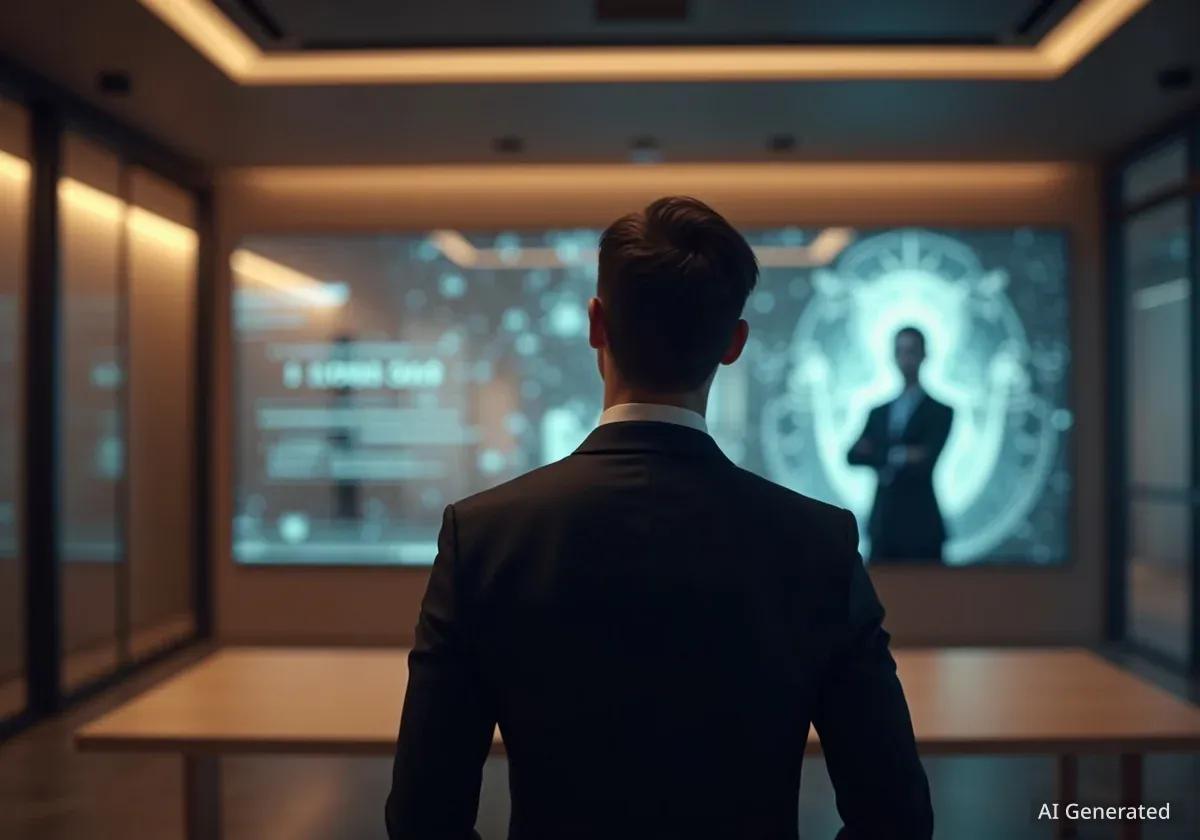An AI-generated performer named Tilly Norwood is reportedly in advanced discussions with multiple Hollywood talent agencies, with an official representation deal expected to be announced in the coming months. This development marks a significant step in the integration of artificial intelligence into the entertainment industry and raises new questions about the future of acting, just a short time after major labor strikes centered on the use of AI.
Key Takeaways
- Tilly Norwood, a hyperrealistic digital creation, is poised to become the first AI performer represented by a major Hollywood talent agency.
- The AI was created by technologist and actor Eline van der Velden, whose company markets Norwood as a "castable and directable" actress.
- Van der Velden stated that Hollywood's interest in AI has grown substantially in recent months, with an agency announcement for Norwood expected soon.
- This development could have significant implications for human actors and the labor agreements established during the 2023 SAG-AFTRA strikes.
The Emergence of a Digital Actor
Tilly Norwood is a computer-generated character described as a hyperrealistic "AI-generated performer." She was developed by Xicoia, a company founded by actor and technologist Eline van der Velden. Xicoia, an offshoot of Particle6 Productions, functions as an "AI talent studio" designed to create and manage digital performers for the entertainment industry.
Van der Velden has been actively promoting Norwood as a viable alternative to human actors. She is described as a "castable, directable, and available on demand actress." This framing suggests a new model where digital characters can be hired for roles, potentially reducing production time and costs associated with traditional casting and filming.
A New Category of Performer
Unlike digital de-aging or CGI characters based on human actors, Tilly Norwood is presented as an original digital entity. This distinction is crucial, as it moves beyond digital likeness rights and into the realm of creating entirely new, non-human performers for film and television projects.
Hollywood's Quiet Adoption of AI
Recent comments from industry insiders suggest that while public discourse on AI has been contentious, many entertainment companies are exploring its applications behind the scenes. Speaking at the Zurich Summit, Eline van der Velden detailed a rapid shift in attitude among Hollywood executives.
"We were in a lot of boardrooms around February time, and everyone was like, ‘No, this is nothing. It’s not going to happen’. Then, by May, people were like, ‘We need to do something with you guys,’" van der Velden explained, according to reports from Deadline.
She further confirmed the advanced state of negotiations for Norwood's representation. "When we first launched Tilly, people were like, ‘What’s that?’, and now we’re going to be announcing which agency is going to be representing her in the next few months," she added.
This sentiment was supported by Verena Puhm of Luma AI’s Studio Dream Lab LA, who also spoke at the summit. Puhm suggested that studios are actively working with AI despite a lack of public announcements. "Historically, the studios have been very slow to adapt, at least publicly," Puhm said. "You can assume that a lot of them are already working on it."
Implications for the Entertainment Industry
The potential signing of an AI performer by a mainstream talent agency carries significant weight, particularly following the 2023 SAG-AFTRA strikes. A central issue in those labor disputes was securing protections for actors against the unauthorized use of their digital likenesses and replacement by AI-generated performances.
Background: The 2023 SAG-AFTRA Strike
The 118-day strike by the Screen Actors Guild – American Federation of Television and Radio Artists (SAG-AFTRA) was one of the longest in Hollywood history. A key demand was establishing consent and compensation guidelines for the creation and use of "digital replicas" of actors. The final agreement included provisions requiring producer consent and payment for the use of an actor's AI-generated likeness.
The case of Tilly Norwood introduces a new dynamic. As a completely synthetic creation, she does not have a human counterpart whose rights need protection. This could allow studios to utilize AI performers without navigating the specific clauses negotiated for human actors in the new labor agreements.
Potential Advantages for Studios
The use of AI performers like Tilly Norwood could offer several practical benefits to production companies, including:
- Constant Availability: Digital actors can work 24/7 without breaks, scheduling conflicts, or physical limitations.
- Reduced Costs: An AI performer eliminates expenses such as salaries, trailers, travel, and on-set coordinators.
- Creative Control: Directors could have precise control over every aspect of a performance, from facial expressions to vocal delivery, without the need for multiple takes.
- Risk Mitigation: Digital actors are not subject to personal conduct issues or controversies that can affect a production's public image.
A New Frontier in Labor and Art
If Tilly Norwood secures representation, it will likely ignite a new and more complex phase of the debate over AI in Hollywood. The discussion will move from protecting the likeness of existing actors to competing with entirely new, non-human performers. This raises fundamental questions about the nature of acting and the value of human creativity in an increasingly automated industry.
While some see this as a threat to the livelihoods of thousands of actors, others may view it as an innovative new tool for storytelling. The outcome of Norwood's agency negotiations will be closely watched, as it could set a precedent for how the entertainment world integrates—or resists—the rise of the digital star.
The industry now faces the challenge of defining the role and rights of these digital entities. The successful integration of an AI performer into the established Hollywood system could signal the beginning of a significant transformation in how movies and television shows are made.





